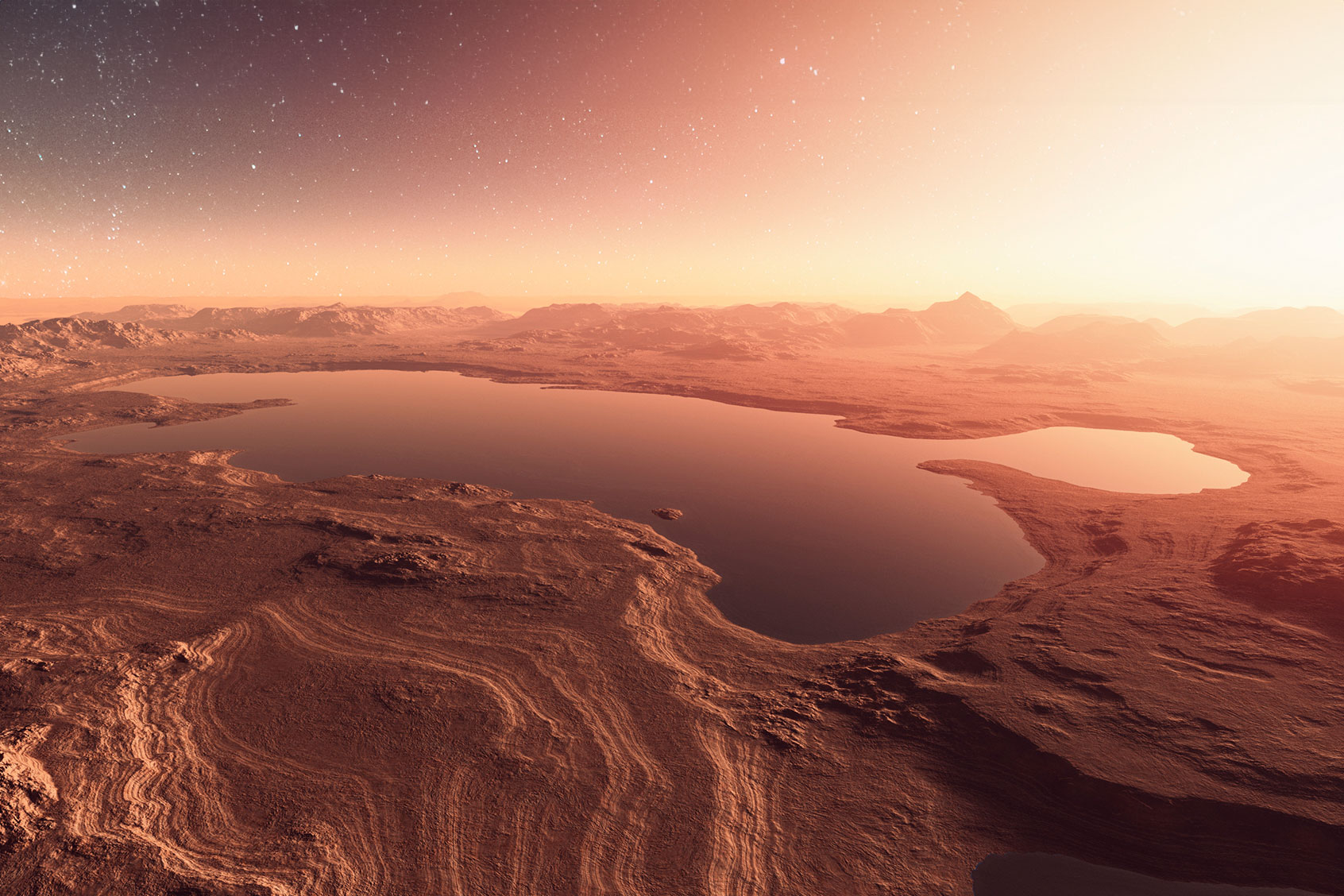For as long as humans have dreamt of discovering alien life forms, they have looked to Earth’s red dusty neighbor Mars as a prime contender. Astrobiologists know that water once existed on Mars, and given that water is considered an essential ingredient to creating life as we know it, it strengthens the chances that life forms could have previously existed on Mars… and may even still exist there today.
Now a recent study published in the journal Proceedings of the National Academy of Sciences reveals that there is a large amount of groundwater on Mars. To find it, just dig beneath the surface.
Using rock physics models and a Bayesian inversion algorithm, the researchers examined data about Martian lithology, porosity, pore shape and liquid water saturation within the planet’s mid-crust (11.5 to 20 kilometers or 7.15 to 12.5 miles). In the process they learned that “a mid-crust composed of fractured igneous rocks saturated with liquid water best explains the existing data.”
Study co-author Dr. Michael Manga, the chair of the University of California — Berkeley’s Department of Earth and Planetary Science, told Salon that the researchers anticipated this possible outcome.
“Mars once had liquid water on its surface in rivers, lakes and possibly oceans,” Manga said. “We knew that the liquid water being buried deep in the subsurface was one possible solution to the question of where Mars' ancient liquid surface water went.”
The new challenge, Manga added, is figuring out how to physically explore this undiscovered world.
“Drilling to these depths is very challenging,” Manga said. “Looking for places where geological activity expels this water, possibly the tectonically active Cerberus Fossae, is an alternative to looking for deep liquids. Planetary protection concerns would need to be addressed.”


